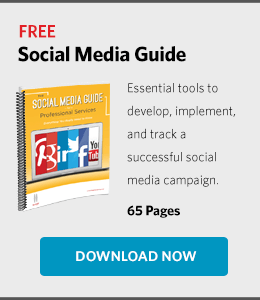You know that Twitter is ideal for sharing stuff with friends and keeping up with celebrities, but it's equally as valuable for your business. The popular social media platform offers a fast and effective way to communicate with clients and build a loyal base of followers. What isn’t always understood is that Twitter is useful for both B2C (business to consumer) and B2B (business to business) companies.
Still, some firms worry that about tweeting the wrong message. But this can be controlled. Tools like Sendible and HootSuite allow tweets to be scheduled and reviewed until everyone is comfortable.
The overarching reason to use Twitter is to attract attention from target audiences, and to keep them interested by delivering information they can easily understand and use.
Provide Useful Product and Service Information
Twitter says that about half of its users who follow companies and brands do so because they like them, want to stay up-to-date on the latest news, and want to learn about new services.
Tap marketing staff to create messages about upcoming offers, industry news, new content, and other information. Let them create client-facing blog posts for your website to promote through Twitter.
Each and every tweet sent, whether it's a message packed into 140 characters or an item such as an article or photograph, should provide some kind of value to the reader. Once a prospect recognizes that a tweet from a particular business is worth reading, tweets will get reshared and even promoted on other social networks.
Here are a few examples of Twitter feeds that have a razor-sharp client focus:
- Lifelock, an identity theft protection provider
- JetBlue, a bright spot in an otherwise dismal airline industry
- ReachLocal, a digital marketing firm that works with local businesses
Tweets from these businesses include conversations with customers and other followers, acknowledgements, and relevant retweets.
Tweet in Language Everyone Understands
Twitter only provides 140 characters to get a point across. For this reason, it's best to tweet in plain English (or whatever language is used) for business purposes. Don't use too much slang or technical jargon. Keep it easily digestible.
In fact, trying too hard to be sound hip or scholarly can backfire. Intuit advises Twitter users to be authentic. Audiences want to see someone real, not contrived. Back this up with other steps to keep a consistent voice and reputation:
- Make sure anything tweeted that originates outside the company is reviewed for appropriateness and relevance. The same step should be followed for retweeting.
- Keep the mood positive.
- Use the direct messaging (DM) tool sparingly.
- Don't stray too far off the corporate voice.
None of this means tossing fun out the door. A company can afford to poke fun at itself when it's appropriate. Apple made light of leaks about the AppleWatch by hiring Stephen Colbert as its “Chief of Secrecy” in 2014, several months before the watch's release.
Be Strategic About Tweeting
Twitter can be a fantastic marketing tool for businesses. But like any tool, it takes some training before it's mastered. Follow these tips to get the most from Twitter:
1. Set objectives for tweeting. Why is the business tweeting? Is it to sell products, or get recognized as an authority, or to start a conversation?
2. Select and use a compelling hashtags (#) in tweets. This gets the account listed on topical pages and helps popularize it.
3. Choose a meaningful topic. Comment on topics that are consistent with the corporate mission.
4. Look for opportunities to collaborate. If the company has an issues campaign that impacts its followers (such as a safety campaign by a toy manufacturer), go and recruit others in the industry to join in.
5. Participate in Twitter chats. These are opportunities to boost name recognition and authority.
On Google+ or LinkedIn? Follow Hinge at +HingeMarketing and join on LinkedIn.


